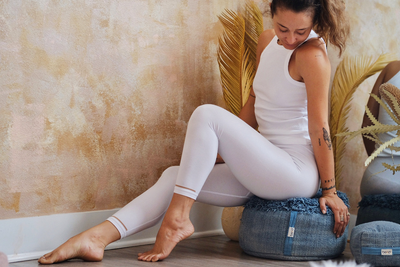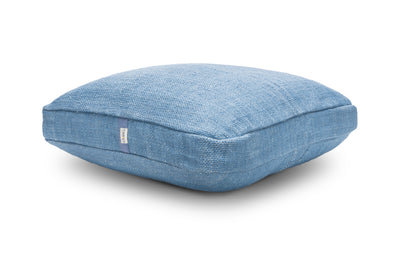The Power of Madder Root~ Health Benefits of This Beautiful + Natural Dye
At Bennd all of our textiles are dyed with plants and made with organic fibers. One of the healing plants that we use to dye is the roots of Madder. Madder Root, or Rubia Tinctorum, is known as common madder, rose madder, or dyers madder. Why does this one plant have so many names? Perhaps because it is one of the most widely used plants for dyeing different textiles due to its stunning pigments. It is also an Ayurvedic herb used for plant medicine to support reproductive health, purify the blood, detox lymph nodes, and so much more!
The Origin of Madder Root
Madder root is one of the oldest natural dyes and has been used across many generations in places like Turkey, Iran, and India. It was originally used for the crafting of exquisite carpets and wall hangings. The deep rich madder color, Turkey red, was a closely guarded secret in that region for centuries. It has since been used all over the world to dye leather, silk, wool, and cotton. The roots contain the dye compounds alizarin and purpurin, which give red, orange, and yellow pigments to the cloth when it is being used as a natural dye. To achieve different colors, like the peachy coral that Madder root is so famous for, you adjust the pH levels of the dye bath.

Health benefits of Madder Root
Your skin, being your largest organ, can easily absorb the healing properties of the plants we infuse into our textiles, thus creating a positive change in your body at the cellular level.
According to Herbalist Dr. Paul Haider here are some of the main medicinal benefits of Madder Root:
Anti-inflammatory - Madder root is a good anti-inflammatory agent that helps with joint pain, redness, swelling, and arthritis. Inflammation is the first step towards disease and thus it’s important to stop inflammation before we really get sick.
Raise White Blood Cell Count - New studies also show that madder root can raise white blood cell counts and reduce the symptoms of leukopenia.
Helps kidney and bladder Stones - Madder root contains ruberythric acid which helps to lower calcium and magnesium and thus helps to prevent the formation of bladder stones. It is an antispasmodic agent thus allowing kidney stones to pass with less pain.
Reduces Acne - Use 100 grams of Madder root powder + 50 grams of dried ground orange peel, turmeric, and sandalwood add in water to make a thick paste for a Madder root face mask.

Are you feeling inspired to use Madder Root?
We love exploring the world of natural plant dyes, it is a perfect way to be both creative and sustainable.
Plant Dye Recipe:
- Measure out your dye (either paste, powder or raw roots) and simmer your dye and fabric for an hour using enough water so your fabric can move freely once you add it.
- Strain out any roots, shavings, pastes, ext. and pour your extract liquid into a new pot. Coffee filters or some scrap fabric work great for this. You can re-soak the madder you strained out to make a lighter dye bath so don’t throw it out!
-
Add your wet yarns and simmer for another hour, then allow to cool in the dye bath for maximum color absorption. Be sure to stir periodically for even dyeing, turning the yarn/fabric frequently while simmering. You can save and re-use the dye bath for lighter shades as well.
Pro-tip: Keep the water at 180, any hotter and the red dye compounds will break down and your color will shift towards yellow and orange.
- Give the fabric a final gentle wash by rinsing under water until the water is clear.
-
Hang fabric outside in the shade to dry
Pro-tip #2: Madder will shift color as you change the pH of the water. Try dyeing up some samples in mason jars and vary the pH of the water with citric acid or soda ash. A lower acid pH (citric acid) will shift the color to be more orange, and higher more alkali pH (soda ash) will shift the color to bluer/darker hues.
Madder Root + Bennd
Madder is an incredible and extremely versatile plant. We carry five different varieties of yoga mats with Madder root dye:
Harda and Madder Root Ayurvedic Yoga Mat
Madder Root and Sappan Wood Ayurvedic Yoga Mat
Madder Root, Turmeric, and Harda Ayurvedic Yoga Mat
Sappan Wood, Turmeric, and Madder Root Ayurvedic Yoga Mat
Namaste!














